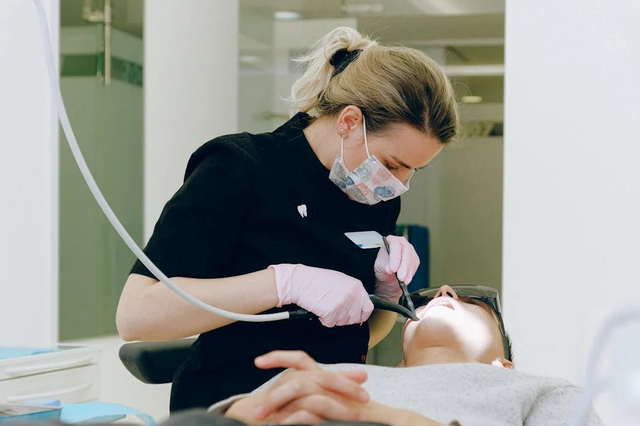5 Cases When Tooth Extraction Is Necessary

A tooth extraction is a dental procedure that removes a tooth from its dental alveolus or socket. An oral surgeon is primarily responsible for doing tooth extractions. However, general dentists and periodontists do tooth extraction treatments as part of their primary duties as dental professionals.
There are two types of dental extractions - simple and surgical extractions.
- Simple extractions
Simple extractions are frequently performed on visible teeth in the mouth using local anesthetic; - Surgical extractions
When the tooth is difficult to access, surgical extraction is undertaken. This occurs when the tooth has not fully erupted or has been damaged below the gumline.
In this technique, the dentist may make an incision to elevate the soft tissues surrounding the tooth. In some circumstances, the tooth may be broken into several pieces to simplify removal. Surgical extractions are typically conducted under general anesthesia.
5 Cases When You Should Consider Tooth Extraction
A patient has two types of teeth: baby teeth and permanent teeth. The baby teeth are the initial set of teeth that the body generates. When the baby teeth fall out, the permanent teeth replace them.
Permanent teeth are supposed to last a lifetime. However, tooth extraction may be necessary in the following cases.
1. Irreparable Tooth Damage from Severe Decay
This occurs when tooth decay spreads to the tooth's pulp. Bacteria created by the decay can enter the pulp and cause an infection.
In this scenario, root canal surgery may be beneficial in treating the infection. However, if the infection is serious, extraction may be required to prevent it from spreading.
2. A Possible Remedy for Periodontal Disease
Periodontal disease is an infection that affects the gums, periodontal ligaments, alveolar bone, and other structures around the teeth. Gingivitis, or gum infection, is the initial stage of periodontal disease. The more severe form of periodontal disease affects both the periodontal ligaments and the alveolar bone.
Periodontal disease is caused by bacteria found in dental plaque, a sticky substance that forms on your teeth several hours after you eat and without brushing. Regular brushing and dental visits can help avoid periodontal disease.
Periodontal disease can sometimes cause a tooth to loosen. When this occurs, tooth extraction is a viable dental treatment.
3. Extraction Can Assist With an Impacted Tooth
A tooth is impacted when it is obstructed from coming out or when the gums fail to fully erupt, preventing the tooth from emerging. This is frequently the situation with wisdom teeth.
To avoid harming neighboring teeth, your dentist may recommend that you have the impacted tooth extracted. Extracting an impacted tooth may also reduce the risk of infection and crowding.
4. Eliminate Tooth Overcrowding
To alleviate dental overcrowding, one or more teeth may need to be extracted. This is also indicated when a patient requires orthodontic treatment and there is insufficient space for the teeth to shift and straighten.
An orthodontist will examine your teeth to determine how crowded they are and whether there is enough space for them to move and improve the alignment of your teeth. Teeth extractions are advised when there is insufficient space to correct your teeth.
5. Necessity Following an Accident
When an accident occurs, such as a car collision, and the patient requires dental treatment, the first decision is always to save the teeth.
Dental bonding, crowns, bridges, and veneers may be indicated. However, if the dental problem is severe, a tooth extraction may be necessary. Tooth extraction is the final choice for dental treatment. Consulting with your dentist will help you understand whether you need a tooth extraction.